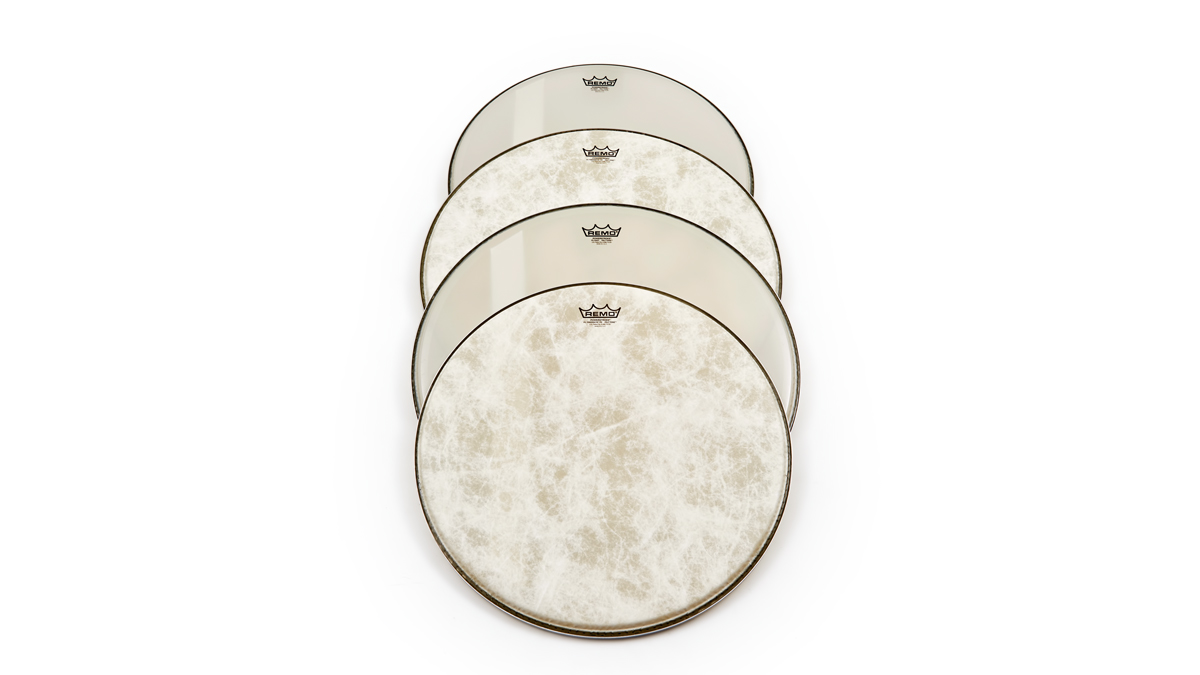MusicRadar Verdict
With its new Felt Tone series Remo cleverly adapts the classic free-floating felt-strip bass drum damping trick to the 21st Century.
Pros
- +
Superb design.
Cons
- -
Very few.
MusicRadar's got your back
Up to the 1970s, bass drum damping was commonly effected via felt strips slipped underneath the drum hoops and held in place by the tension of the head.
Yes, they compromised the bearing edges, but the real problem was the faff, trying to stretch the felt tight while tensioning the head. So what’s Remo’s solution?
Build
Working with drum designer/builder Ronn Dunnett, Remo starts with the Powerstroke P3, which has a flap of transparent Mylar all around its internal perimeter. This is slimmed down to a half-inch wide all round and extended in one spot by a vertical 2"-wide band, under which is laid the felt strip.
The strip is stuck to the Mylar band, but is left ‘free-floating’ against the head in classic style. Top and bottom it slips into the perimeter flap, but ends just short of the collar, and hence short of the bearing edge.
Felt Tones are available in standard sizes and in Fiberskyn Diplomat, Hazy (transparent smooth white) and Coated Ambassador weights.
Hands On
The plastic foam perimeter rings of Remo’s Powerstroke Pro and Evans’ Emad series produce a modern controlled sound, where Aquarian’s SuperKicks, with their felt rings, are warmer and thuddier. Aquarian also offers Vintage heads with felt strips. However, the strips are fixed.
The clever thing about Remo’s Felt Tones is that the felt strip floats. Although note that with the original loose felt strips you could position them anywhere you wanted. The Felt Tone strip is positioned to one side and subdues a touch of the perimeter highs plus a hint of the body.
Mounting a 20" Fiberskyn Diplomat as a batter and a Hazy white front on a 1964 Ludwig, the result is tremendous. This is a thin batter head and best not slammed too hard, but the drum sounds so open and lively, really warm and blustery, an almost orchestral bass drum tone with a healthy rumble.
There’s an extra dimension to the drum, more a classic bluesy, jazzy, rock’n’roll vibe, leaving mids and highs so the bass drum isn’t brutally damped. Having the front strip means you don’t need to cut a hole, or place anything further against the head.
The force of the beater stroke causes the front and back strips to flap fractionally away from the heads and then settle back, gently foreshortening the decay.
Turning the drum around so the Hazy becomes the batter, the tone is a little more blousy and loose than the darker and warmer Fiberskyn.
“Built from the same sacred stash of NOS silicon transistors and germanium diodes, giving it the soul – and snarl – of the original”: An octave-fuzz cult classic returns as Jam Pedals resurrects the Octaurus
What’s the buzz? Meet Yellowjacket, Cherry Audio's recreation of EDP’s trend-setting Wasp from 1978
“A fabulous trip through all eight songs by 24 wonderful artists and remixers... way beyond anything I could have hoped for”: Robert Smith announces new Cure remix album










